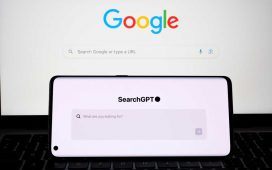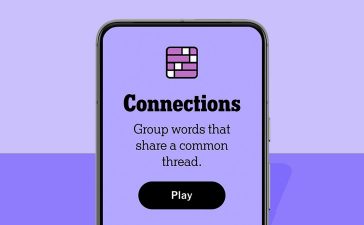Google’s developer keynote at its IO show on Wednesday focused on Android and on web technology, which suddenly looks much more capable thanks to WebGPU, an API that allows web applications to tap into local GPU hardware.
Chrome 113 arrived with WebGPU switched on by default in early April, and Google is pitching the technology as a way to run machine learning libraries like Tensorflow.js, which operates 100x faster than otherwise with the added GPU acceleration.
Ongoing work on WebAssembly support for languages with garbage collection has now advanced to the point where Google is encouraging Android developers to write Kotlin code that can be compiled into a tidy Wasm binary and deployed to the web, attendees were told.
The lumbering Chrome Extension platform transition to Manifest v3, a controversial revised extension API, merited a mention. Ali Spivak, head of Chrome extensions developer relations, acknowledged persistent developer complaints by saying that Google plans to address platform gaps and to fix critical bugs before announcing a new deprecation timeline for the current system.
“We will give developers time to build, guaranteeing at least six months between a timeline announcement and any experiments deprecating Manifest V2 features,” said Spivak. “We will enable a better feedback loop and be more responsive.”
Other members of the Chrome extensions team touted updated documentation, revised sample code, a reworked menu to clarify what each available extension can do, an improved Chrome Web Store API, and the addition of a sidebar API.
Manifest destiny
The adoption of Manifest v3 by other major browser vendors – a nod to the market dominance of Chrome in addition to its claimed technical merits for mobile devices and arguable privacy benefits – has brought another bid for cross-company coordination.
In conjunction with the W3C WebDX community group, Google is supporting a spec called Baseline to address cross-browser fragmentation and to make the web developer experience better. Baseline will serve as a common set of features that should be available across Chrome, Edge, Firefox and Safari.
“It finally takes the guesswork out of ‘can I actually use this in my app?'” said Matt Waddell, senior director of product management for Chrome.
AI of course was mentioned, with an eye toward helping developers write apps that interact with Google’s new PaLM 2 model. Android Studio has gained an AI helper called Studio Bot, to help explain and fix code errors. And the Google Play Console will now generate custom store listings for different types of users, with human approval prior to publication.
Android Studio has also gained the ability to stream apps to devices for development, which simplifies the process of making code changes and having them show up on a test device.
With regard to advertising tech, Google is shipping new cookie capabilities related to CHIPS and First-Party Sets, two of its Privacy Sandbox technologies in Chrome.
Those who test the performance of web applications may wish to know that Google’s Core Web Vitals test will swap the First Input Delay measurement with Interaction to Next Paint, a different way to assess the responsiveness of a web application, come March 2024. And if you have no idea what this entails, you’re probably happier for it.
ChromeDevTools, the interface through which web devs interact with apps running in Chrome, received some love. Google says the stack traces are cleaner, there’s a new “show your code” option, and broader breakpoint reliability.
Security under the spotlight
Various security advancements also had their moment in the sun.
The Chocolate Factory introduced a tool called About this Image that provides search users with information about when an image or similar images first entered Google’s search index, and about where the image initially and subsequently appeared.
Deleting recent searches can now be done from the Maps interface with a tap, which could help with location history privacy. Although there are lingering problems for some in that area.
Google is expanding its Content Safety API, used by various sites to flag harmful content via AI, to look for child sexual abuse material in video content. And its Safe Browsing API, used to identify compromised websites and to prevent phishing, has been made faster.
Google Drive is getting a new view to make it easier to spot spam and unwanted or abusive content, as well as automated classification abilities similar to those possessed by Gmail.
In addition, dark web scans for Gmail IDs, previously offered only to Google One subscribers in the US, will be available to any Gmail account holder in the US, and later to international markets.
Android users can look forward to an improved Find My Device experience, Unwanted Tracking Alerts – the result of a joint initiative with Apple – and Magic Compose, a way to have generative AI compose responses to messages (presumably to people you don’t much care about).
Take a Flutter
Google’s cross-platform app framework Flutter and the related Dart programming language received the very ministrations foretold at the company’s Flutter Forward conference in January.
Flutter 3.10 is now shipping with Dart 3, which arrives with null safety as the default and with the language’s legacy “unsafe” mode disabled. This should prevent a set of bugs related to uninitialized values appearing in Flutter apps. And there are many such apps, we’re told.
“We’ve crossed the threshold of over a million published apps that are using Flutter across six platforms, which is a wild number,” said Tim Sneath, who oversees product management for Dart and Flutter, in an interview prior to the conference.
“I think when we started, if you told me that we’d get a million apps published with Flutter you could have blown me over. It’s really a reflection that Flutter has moved from being a small scrappy startup idea at Google to being this very popular leading UI toolkit.”
Among other enhancements, Flutter 3.10 brings Impeller to iOS by default. Impeller is the name for an Flutter initiative to iron out graphics bottlenecks related to the loading of shaders.
Also, Flutter elements can now be embedded in web pages like CSS. Better still, Flutter apps can be boiled down to WebAssembly (Wasm) code, through efforts to make Wasm work with garbage collected languages like Dart and, as noted above, Kotlin.
Translation to Wasm has resulted in speed improvements on the order of 3x for Flutter apps, according to Google.
“Supporting WebAssembly with garbage collection means not only that each of the ecosystems individually can improve but also that the two can talk more closely together,” explained Sneath.
“They’re sharing the same underlying substrate so it becomes much easier to write code without the choice of language being some kind of fork in the road. So for us at Google, it’s a really healthy part of that convergence across different aspects of our stories into a consistent architectural message.” ®










